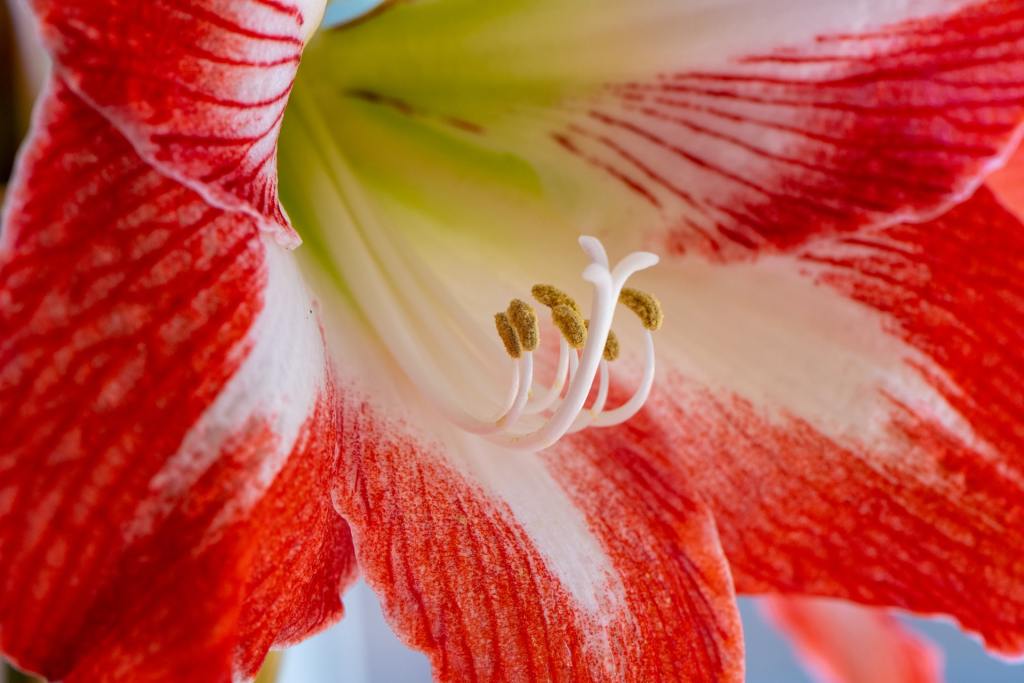The amaryllis is a very popular indoor houseplant usually grown as a flowering potted plant during the holiday season. The fun and unique part of these plants is their ability to rebloom and the time of year they produce flowers. If you’re lucky enough to have one of these beautiful plants in your home, you might have some questions about caring for it. Here are the answers to the most commonly asked amaryllis questions.
How do you care for an indoor amaryllis plant?
You can find a comprehensive care guide here, but to summarize amaryllis indoor care, this plant prefers full sun or partial shade and rich but well-draining soil. To water this plant, you’ll want to wait until the top few inches are dry and then water thoroughly to be sure you saturate the soil. Empty the tray to avoid the risk of root rot. During the growing season, your plant will appreciate a feeding about every two weeks.
What do I do with an amaryllis bulb after it blooms?
Once your amaryllis has bloomed, take a sanitized knife or pruning shears and cut the spent stem about 2 inches above the bulb. Don’t touch the foliage around the flower stem. It needs its leaves to create energy and store up for another bloom next season.
In addition, you’ll want to keep feeding the plant to ensure it has enough to produce more blooms and stay healthy. Creating flowers is hard work on a plant, and if it’s not cared for after it’s bloomed, the plant can suffer and might even die.
How do I get my amaryllis to bloom again?
It might sound crazy, but you can “force” your amaryllis plant to bloom again, even if it’s already had a flower this season. Of course, it might not work every time, but here’s a method that has worked for many growers.
To get the amaryllis to bloom again, it will first need to go into its dormant state. To do this, you’ll have to place the bulb in a dark and cool place and without water. When the leaves inevitably turn brown, cut them off. Now the plant needs exposure to temperatures around 50 to 55 degrees Fahrenheit for about eight to ten weeks.
After that time is up, place the plant back in a well-lit place with temperatures around 70 degrees Fahrenheit and keep the soil moist but not wet. Once there is growth, you can go back to your regular watering schedule, and the plant should produce another flower!
Where should I place an amaryllis plant in my house?
To thrive and grow healthy leaves and flowers, the amaryllis plant requires full or partial sun exposure. This plant doesn’t mind direct sunlight, so even a bright window could work perfectly. However, with windows, there are often drafts, and sudden temperature changes could harm this plant and inhibit its ability to produce a flower. So find a warm and sunny spot in your home, and this plant will be happy and healthy!
How often should I water my amaryllis indoors?
There’s no fixed watering schedule that can guarantee a healthy amaryllis plant. How often you water a plant depends significantly on how warm your home is, how much sun the plant gets, how much growing the plant is doing, and how dry or humid the air is in your home. All these factors can make your plant need more or less water, and they can fluctuate throughout the year.
For the best watering routine, we recommend getting a moisture meter. You can find these online, at garden centers, or even at discount shops for about $10 to $15. These meters allow you to measure how much moisture is in the soil accurately.
You can also move the meter from one side of the pot to the other, and it reaches further into the soil than your fingers can. It gives you a moisture reading, and you can determine then if your beautiful blooming amaryllis plant needs water or not. Using a moisture meter to get a more actuate reading helps prevent you from overwatering your plant, causing root rot, or even underwatering it, and risking the plant drying up and dying.
The amaryllis is a lovely flowering plant that can add color to your home when the rest of the world is typically at its grayest. Consider the answers to these troubleshooting questions to care for your plant and ensure it’s as healthy and happy as possible.
Editors' Recommendations
- Stunning Monstera plants that you should add to your indoor plant collection
- Beyond basil and cilantro, add these unique plants to your indoor herb garden
- 5 easy-care spider plant varieties perfect for any home garden
- Easy hoya plants to add to your indoor plant collection
- Are these common houseplants safe for your cat? Read this guide to find out the scoop






